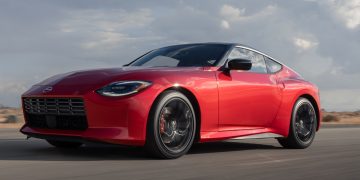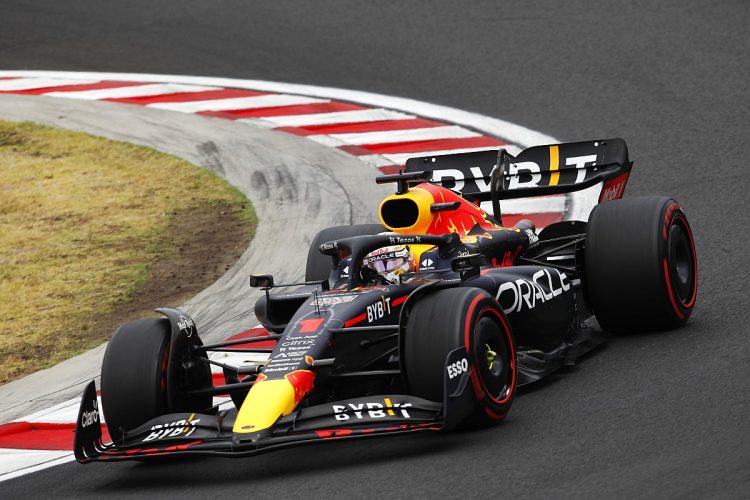Automotive competitions, from Formula 1 to street racing, have long been a staple of motorsport culture, attracting millions of fans worldwide. The high-speed thrills, cutting-edge technology, and the fierce competition between teams have made car racing one of the most exciting sports to watch. However, in an era dominated by digital entertainment, gaming, and changing viewer habits, the question arises: Can traditional automotive events still captivate the attention of younger audiences?
In this article, we will explore how automotive competitions are adapting to the preferences and interests of younger generations. We will discuss the impact of digital media, the rise of e-sports, evolving fan engagement strategies, and the appeal of motorsports’ history and technology in attracting a new, younger demographic.
1. Changing Entertainment Habits: From TV to Digital Platforms
One of the most significant shifts in the world of sports in recent years has been the change in how younger generations consume content. Traditional TV viewership has declined as platforms like YouTube, Twitch, and Netflix have become dominant sources of entertainment. This presents a unique challenge for automotive competitions, which have traditionally relied on TV broadcasts for their global reach.
a. The Shift to Streaming and Digital Content
Younger audiences, particularly Generation Z and Millennials, are more likely to watch content online rather than on traditional television. As a result, motorsport organizations and teams have had to adapt their strategies to engage fans through digital channels. Many racing series, such as Formula 1, NASCAR, and MotoGP, have partnered with streaming platforms like ESPN+ or DAZN, providing fans with access to live races and behind-the-scenes content. Additionally, YouTube channels, Instagram stories, and TikTok clips have become essential for keeping younger fans engaged between race weekends.
The accessibility and convenience of streaming platforms make it easier for young people to follow racing events from anywhere, whether they’re at home or on the go. The use of social media has become crucial for connecting with fans, offering updates, highlights, and interactive content that appeals to the younger generation’s demand for real-time engagement.
b. Short-Form and Interactive Content
With the shorter attention spans of younger viewers, motorsport organizations are experimenting with new types of short-form content to catch their interest. For example, Formula E, the electric racing series, regularly produces highlight reels, driver interviews, and tech breakdowns that can be consumed quickly, allowing viewers to stay up to date without committing to the full race. Platforms like TikTok are also becoming key tools for motorsport brands, delivering bite-sized, engaging videos that capture attention.
Interactive content is also becoming increasingly important. Formula 1 has incorporated live polls, fan voting, and even virtual reality experiences, giving fans the ability to interact with the races and engage with the teams and drivers. This type of fan engagement allows younger audiences to feel involved and connected to the sport in a way that passive TV watching simply cannot replicate.
2. The Rise of Esports: Virtual Racing Competitions
Another major factor influencing the way younger audiences engage with motorsports is the rise of esports and virtual racing competitions. Video games like Gran Turismo, Forza Motorsport, and iRacing have become widely popular, with many young people participating in virtual races and creating content around their gaming experiences.
a. Virtual Racing Leagues and Competitions
Esports has created a parallel motorsport world that appeals to younger generations. Formula 1 Esports is one example, where professional drivers compete in virtual races, and fans watch the action unfold online. These digital racing events replicate the excitement of real-world motorsports but with the accessibility and convenience of a gaming platform. The success of these esports leagues highlights how digital platforms can be used to attract younger viewers who may not have had an interest in traditional motorsports.
Moreover, virtual racing offers lower barriers to entry than physical motorsports, making it an attractive option for young people who might not have the resources to pursue a career in real-world racing. The global rise of streaming platforms such as Twitch has further fueled this trend, allowing esports competitions to reach audiences that may never have considered motorsports before.
b. Bridging the Gap Between Real and Virtual Racing
The convergence of real-world motorsports and esports is another way automotive competitions are attracting younger fans. Some racing organizations, such as Formula 1 and IndyCar, have partnered with gaming companies to host virtual racing events that feature professional drivers alongside esports players. These hybrid events help bridge the gap between the traditional motorsport world and the emerging esports culture, offering a seamless experience for young fans who may be more familiar with virtual racing than physical competitions.
By integrating the excitement of esports with the prestige of real-world racing, these events are opening motorsport to a broader, digitally native audience. Additionally, some esports racers have even transitioned to professional racing careers, further validating the relationship between virtual racing and real-world motorsports.

3. Sustainability and Electric Vehicles: The Appeal of Green Racing
Younger generations are increasingly concerned with environmental issues and sustainability, leading many to question the carbon footprint of traditional motorsports. As concerns about climate change and environmental degradation grow, electric vehicles (EVs) have gained significant popularity, especially among younger car enthusiasts.
a. Formula E: The Future of Racing
In response to this trend, the rise of Formula E, an electric vehicle racing series, has introduced a new wave of excitement to the motorsport world. Formula E is designed to showcase electric vehicle technology and its potential in the high-performance world of racing. This has captured the attention of younger, environmentally conscious audiences who are passionate about both motorsports and sustainability.
Formula E’s eco-friendly focus, paired with its emphasis on innovation and cutting-edge technology, makes it a natural fit for younger viewers who are interested in green technology and the future of mobility. The series emphasizes sustainability in every aspect, from the cars to the venues and even the race formats, and this resonates with a generation increasingly concerned with climate change.
Moreover, many younger fans are drawn to the concept of electric motorsports because they align with their values, creating a deeper connection with the sport beyond the excitement of racing. This trend is likely to continue growing, as more racing series embrace electric vehicles and the broader shift toward sustainability in automotive technology.
4. The Need for Diversity and Inclusivity in Motorsport
Another important factor in attracting younger viewers is the increasing demand for diversity and inclusivity in motorsports. Younger generations are more likely to support brands and organizations that align with their values of social justice, gender equality, and inclusivity.
a. Breaking Down Barriers
Historically, motorsports have been perceived as an industry dominated by men and a select group of wealthy participants. However, in recent years, there has been a noticeable push to make the motorsport world more inclusive. Formula 1, for example, has implemented initiatives to support female drivers, young talent, and underrepresented groups in motorsports, opening up the sport to a wider audience.
One example of this is the launch of programs such as the FIA Women in Motorsport Commission, which aims to encourage more women to participate in motorsports and increase their visibility in the industry. These efforts are aligned with the values of younger viewers, who are more likely to support sports that promote diversity and break down barriers.
b. Social Media as a Platform for Advocacy
Social media has also provided a platform for motorsports to address social issues and engage with fans on a deeper level. Drivers and teams now use platforms like Twitter, Instagram, and TikTok to advocate for causes they believe in and to connect with their audience. The Black Lives Matter movement, for example, was supported by many motorsport figures, and these actions resonate with younger fans who value authenticity and social responsibility.
By embracing diversity and supporting social causes, motorsport organizations can continue to attract a younger, more socially conscious audience who values inclusivity and activism.
5. The Thrill of Live Events and Fan Engagement
While digital media plays a crucial role in reaching younger audiences, there is still something special about live events and the physical experience of attending a motorsport race. The adrenaline, camaraderie, and energy of a live race are elements that are difficult to replicate through a screen.
a. Creating an Immersive Experience
Motorsport organizations are focusing on creating more immersive and interactive experiences at live events to engage younger fans. From fan zones and interactive displays to virtual reality experiences, the goal is to make the race itself a multisensory experience that captures the attention of young people. Formula 1, for example, has invested heavily in fan engagement at its Grand Prix events, offering unique opportunities for fans to interact with drivers, teams, and sponsors.
The introduction of music festivals, food trucks, and celebrity appearances at races also adds to the overall experience, making these events more appealing to a younger demographic that values entertainment beyond the sport itself.
Conclusion: Evolving with the Times
While it’s clear that younger audiences are no longer solely reliant on traditional TV broadcasts to consume motorsports, automotive competitions continue to captivate their attention in new and exciting ways. From embracing digital platforms and esports to electric vehicle racing and inclusive initiatives, the motorsport world is evolving to meet the interests and values of younger generations.
As long as motorsports remain adaptable, innovative, and aligned with the values of today’s youth, they will continue to be a source of passion and excitement for future generations. The future of motorsports is not just about fast cars and high-speed races—it’s about embracing technology, community, sustainability, and diversity, all while keeping the thrill of the race alive.


































Discussion about this post